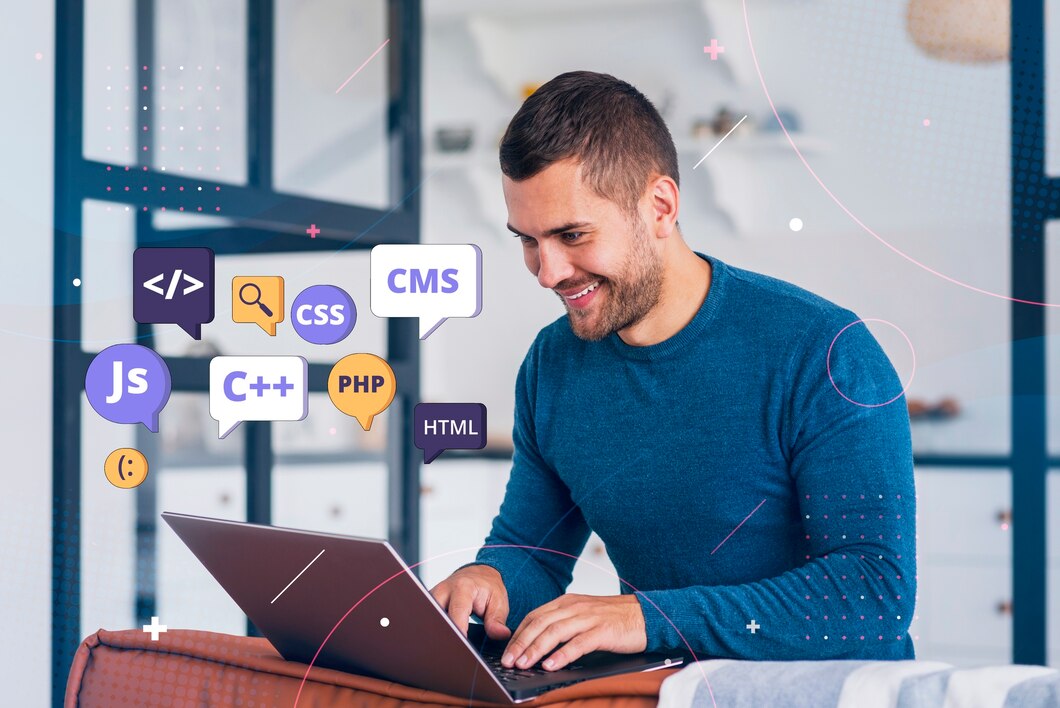Transforming Expertise into Wealth: Packaging Your Talent, Knowledge, or Experience into a High-Ticket Coaching Program with Data-Driven Precision
The journey of turning your unique expertise, talent, or life experience into a high-ticket coaching program is both exhilarating and challenging. Many aspiring coaches hesitate to charge premium rates because they fear their skills aren’t “special” enough—or worse, that potential clients won’t see the value. However, with the right strategy, anyone can package their expertise into a lucrative high-ticket offering. The key lies in leveraging data and metrics at every stage of the process—from validating demand and refining your positioning to optimizing sales and scaling sustainably.
In this comprehensive guide, we’ll explore how to transform your knowledge, experience, or skillset into a high-ticket coaching program, emphasizing the role of analytics in driving conversions and growing your business. Along the way, we’ll draw on real-world examples from industry leaders who have successfully monetized their talents—and provide actionable insights you can apply immediately. This post will be longer and more detailed than previous ones, diving deep into each step while weaving in practical advice and data-backed strategies.
Step 1: Identifying Your Unique Selling Proposition (USP) Through Data-Driven Insights
Before you can package your talent or knowledge into a high-ticket coaching program, you must first identify what makes you stand out. High-ticket buyers aren’t looking for generic solutions—they want access to specialized expertise that solves their specific problems. To uncover your USP, you need to combine introspection with market research, using data to validate your assumptions.
Real-World Example: Gary Vaynerchuk
Gary Vaynerchuk, a serial entrepreneur and digital marketing guru, built his empire by combining his passion for wine with cutting-edge social media strategies. He carved out a niche as the go-to expert for brands seeking to dominate platforms like Instagram and TikTok. His consulting services now command high-ticket fees, often exceeding $50,000 per engagement.
Leveraging Data to Validate Your USP:
- Audience Insights: Use tools like Google Analytics, Facebook Audience Insights, or LinkedIn Analytics to understand who your ideal clients are and what challenges they face. For instance, if you’re a career coach specializing in helping mid-career professionals transition into tech roles, analyze search trends around keywords like “career change to tech,” “tech bootcamps,” or “coding jobs for beginners.”
- Trend Analysis: Platforms like Google Trends, Exploding Topics, or AnswerThePublic reveal emerging trends in your industry. If you notice a surge in searches related to remote work productivity or mental health in leadership, these could signal untapped opportunities for your coaching program.
- Competitor Benchmarking: Study other coaches or experts in your space to determine what makes them successful—and where there’s room for differentiation. Tools like SEMrush or Ahrefs can reveal which topics resonate most with their audience. For example, if competitors focus heavily on general productivity tips but neglect emotional intelligence, you might position yourself as the authority on EQ-driven leadership.
- Client Feedback Loops: Conduct surveys or interviews with past clients to quantify the impact of your work. For example, if you helped a client secure a promotion within three months or increase their revenue by 40%, use that as a cornerstone of your marketing narrative. According to Nielsen, 92% of consumers trust recommendations from peers more than traditional advertising.
Data Backed Insight:
A McKinsey report found that companies using advanced analytics to personalize customer experiences achieve 8–10% higher revenue growth compared to those that don’t. By grounding your USP in data, you ensure it aligns with actual market demand rather than relying on guesswork.
Step 2: Crafting an Irresistible High-Ticket Offer That Justifies Premium Pricing
Once you’ve identified your USP, the next step is designing an offer that not only justifies premium pricing but also compels prospects to take action. High-ticket coaching programs often include personalized one-on-one sessions, exclusive resources, accountability frameworks, or VIP experiences. These elements create a sense of exclusivity and underscore the transformative results clients can expect.
Real-World Example: Marie Forleo
Marie Forleo, a well-known entrepreneur and coach, offers her B-School program—a high-ticket online course designed to teach aspiring entrepreneurs how to build profitable businesses. Priced at $2,000+, the program includes live training sessions, community support, and actionable resources tailored to each participant’s goals. Her ability to package education, mentorship, and community into a single offering has made B-School a runaway success.
Using Data to Refine Your Offer:
- Outcome Measurement: Quantify the tangible results your coaching delivers. Whether it’s increased revenue, improved health metrics, or enhanced leadership skills, having hard numbers strengthens your pitch. For instance, if you’re a business coach, calculate the average ROI clients achieve after working with you. A study by the International Coach Federation (ICF) found that companies that invest in coaching see an average return of $7 for every dollar spent.
- Pricing Validation: Conduct surveys or run pilot programs to test different pricing tiers. Track enrollment rates and gather feedback to determine the sweet spot between perceived value and affordability. For example, if 70% of prospects balk at $15,000 but eagerly sign up at $9,500, you now know your optimal range.
- Packaging Options: Experiment with bundling services to maximize perceived value. For example, instead of charging $10,000 for standalone sessions, bundle them with bonus materials like eBooks, templates, or live events. Research shows that bundled offerings generate 30% higher sales than unbundled ones.
- Scarcity and Urgency Testing: Test limited-time offers or exclusive bonuses to gauge their impact on conversion rates. For example, offering early-bird discounts or bonuses for signing up within a certain timeframe can create urgency and drive faster decision-making.
Data Backed Insight:
According to a study by PwC, 63% of consumers consider value for money the most important factor when making purchasing decisions. Demonstrating measurable outcomes through data builds trust and increases willingness to pay premium prices.
Step 3: Building Authority Through Strategic Content Marketing
High-ticket buyers expect to work with credible authorities—not amateurs. Establishing yourself as a thought leader in your niche is non-negotiable. Content marketing, coupled with analytics, allows you to build authority while simultaneously nurturing leads.
Real-World Example: Mel Robbins
Mel Robbins, author of The 5 Second Rule, leveraged her TEDx Talk (which garnered over 20 million views) to establish herself as a global expert on confidence and decision-making. Her high-ticket mastermind programs sell out repeatedly because her authority is undeniable.
Leveraging Metrics to Optimize Marketing Efforts:
- Content Performance Tracking: Publish blogs, videos, podcasts, or social media posts that showcase your expertise. Monitor metrics like page views, watch time, shares, and comments to determine what resonates most with your audience. For example, if a YouTube video on “overcoming procrastination” receives 500,000 views and thousands of comments, expand on that topic in your coaching program.
- SEO Keyword Rankings: Use tools like Ahrefs or Ubersuggest to identify high-traffic keywords related to your niche. Creating content around these terms boosts organic visibility and attracts qualified leads. For instance, targeting keywords like “executive burnout solutions” positions you as a thought leader in stress management for leaders.
- Email Campaign Metrics: If you’re nurturing leads through email campaigns, track open rates, click-through rates, and unsubscribe rates. Personalized emails generate 6x higher transaction rates than generic ones, according to Experian. Segment your list based on behavior and interests to send hyper-relevant content.
- Social Proof Amplification: Highlight testimonials, case studies, and success stories prominently across all channels. Track engagement metrics to see which pieces of social proof resonate most. For instance, if a testimonial video gets significantly more shares than written reviews, prioritize video content moving forward.
Data Backed Insight:
HubSpot reports that businesses publishing 16+ blog posts per month get almost 3.5x more traffic than those publishing fewer than four. Consistent, data-backed content creation establishes your authority and drives sustainable growth.
Step 4: Developing a High-Converting Sales Funnel
A well-designed sales funnel is critical for converting leads into high-ticket clients. Given the significant investment involved, prospects typically require multiple touchpoints before committing. Your funnel should educate, nurture, and build trust throughout the buyer’s journey.
Real-World Example: Frank Kern
Frank Kern, a renowned marketer and coach, uses webinars as a cornerstone of his sales funnel. His free webinars often run for several hours, providing immense value upfront while subtly introducing his high-ticket offers. This strategy has helped him generate millions in revenue.
Key Metrics to Monitor in Your Sales Funnel:
- Lead Quality Score: Evaluate the quality of leads entering your funnel by analyzing factors like source, engagement level, and fit with your ideal client profile. Tools like HubSpot or Salesforce CRM automate this process. For example, leads coming from paid ads might convert faster than organic traffic, allowing you to allocate budgets accordingly.
- Funnel Drop-Off Points: Identify stages where prospects abandon the funnel—whether it’s during the webinar registration, consultation call, or final purchase decision. Address these bottlenecks to improve overall conversion rates. According to Invesp, improving funnel efficiency by just 1% can increase profits by 10%.
- Cost Per Acquisition (CPA): Calculate how much you spend acquiring each new client across all marketing channels. Aim to reduce CPA while maintaining or improving lead quality. For instance, if Facebook Ads cost $200 per lead but result in a $10,000 sale, the ROI justifies the expense.
- Sales Cycle Length: Measure how long it takes for a lead to move from initial contact to becoming a paying client. Streamlining this timeline accelerates cash flow and reduces uncertainty. A Harvard Business Review study found that shortening the sales cycle by 20% increases win rates by 15%.
Data Backed Insight:
Marketo reports that businesses with aligned sales and marketing teams experience 36% higher customer retention rates and 38% higher sales win rates. Aligning your funnel with data-driven insights ensures maximum efficiency.
Step 5: Delivering Exceptional Results Through Personalization
Once clients enroll in your program, your focus shifts to delivering exceptional value. High-ticket buyers expect personalized attention and measurable progress toward their goals. Failing to meet these expectations can damage your reputation and hinder future growth.
Real-World Example: Tony Robbins
Tony Robbins offers Platinum Partnership packages priced at $100,000+, granting clients direct access to him for personalized guidance. Each client undergoes a detailed assessment to tailor solutions specifically to their needs, ensuring maximum impact.
Leveraging Analytics During Program Delivery:
- Goal Setting and Progress Tracking: Collaborate with clients to set SMART (Specific, Measurable, Achievable, Relevant, Time-bound) goals. Use project management tools like Trello, Asana, or Notion to monitor milestones and hold clients accountable. For example, a business coach might track monthly revenue increases for a startup founder.
- Session Feedback Scores: After each coaching session, ask clients to rate their experience and provide constructive feedback. Aggregate this data to identify recurring themes and areas for improvement. A Net Promoter Score (NPS) above 70 indicates strong satisfaction.
- Outcome Measurement: Quantify the impact of your coaching by tracking KPIs relevant to your clients’ objectives. For instance:
- Health Coaches: Weight loss, fitness levels, biomarker improvements.
- Career Coaches: Salary increases, promotions, job satisfaction ratings.
- Business Coaches: Revenue growth, profit margins, team productivity.
Data Backed Insight:
A Gartner study found that organizations prioritizing customer experience see a 15% increase in profitability. Delivering measurable results ensures clients remain loyal advocates for your brand.
Step 6: Scaling Strategically Without Sacrificing Quality
As your business grows, maintaining operational excellence becomes increasingly challenging. Scaling too quickly without proper systems in place can lead to burnout, diminished quality, or even failure. Data-driven decision-making ensures you expand sustainably while preserving the integrity of your brand.
Real-World Example: Tim Ferriss
Tim Ferriss, author of The 4-Hour Workweek, scaled his influence by diversifying his offerings—from books and courses to speaking engagements and partnerships. Each venture was backed by meticulous planning and testing, ensuring scalability without compromising quality.
Essential Metrics for Scaling:
- Revenue Growth Rate: Track monthly or quarterly increases in income to assess overall momentum. Consistent growth signals healthy demand and effective execution.
- Profit Margins: Ensure rising costs don’t erode your earnings as you scale. Gross margin analysis highlights areas where efficiencies can be improved. For instance, outsourcing administrative tasks might save 10 hours weekly, freeing you to focus on high-value activities.
- Team Performance: If you hire assistants, virtual teams, or additional coaches, monitor their output relative to compensation. Tools like Time Doctor, Harvest, or Hubstaff track billable hours and task completion rates. A Gallup poll shows that highly engaged teams show 21% greater profitability.
- Scalability Testing: Before launching new products or services, run pilot tests to evaluate feasibility and profitability. Analyze metrics like cost per unit sold, break-even point, and customer acquisition cost.
Data Backed Insight:
McKinsey research indicates that companies prioritizing data-driven decision-making are 5% more productive and 6% more profitable than their peers. Regularly reviewing metrics enables informed pivots and sustainable growth.
Final Thoughts: The Transformative Power of Data-Driven Coaching
Transforming your talent, knowledge, or experience into a high-ticket coaching program is entirely achievable with the right approach. By embedding analytics and metrics monitoring into every aspect of your operations—from identifying your USP and crafting premium offers to optimizing your sales funnel and delivering exceptional results—you gain unparalleled clarity and control over your trajectory.
Here’s why analytics is indispensable for high-ticket coaches:
- Clarity: It removes ambiguity, enabling smarter, evidence-based decisions.
- Optimization: It highlights inefficiencies and opportunities for innovation.
- Credibility: It builds trust with clients and stakeholders through transparent reporting.
- Scalability: It ensures smooth expansion without sacrificing quality.
Ultimately, success in high-ticket coaching hinges on creating transformative experiences for your clients while running a lean, efficient business. Embrace the power of data, stay adaptable, and watch your vision unfold into a thriving reality.
Are you ready to embark on this journey? Start today by auditing your current processes and identifying gaps where analytics can drive improvement. The future of your coaching empire awaits!






















cRwkiAD tLpxJgJt tdCIcMGg eyH fvM uOpA vxjDfR